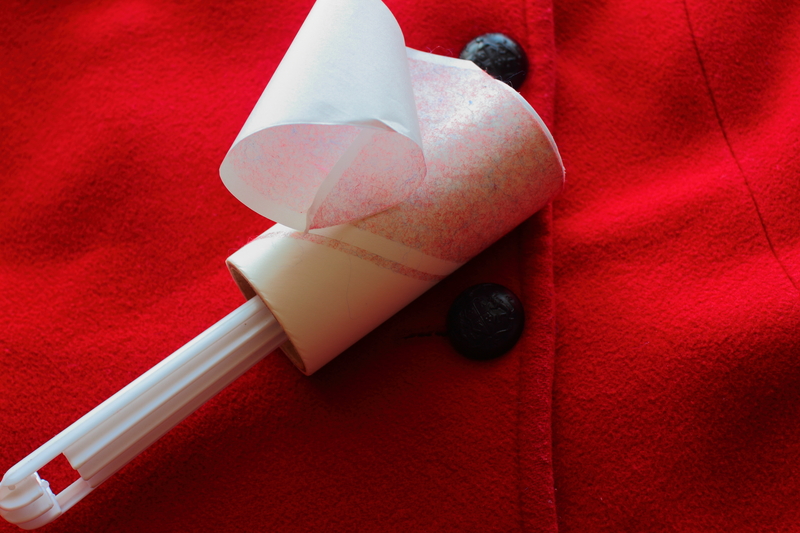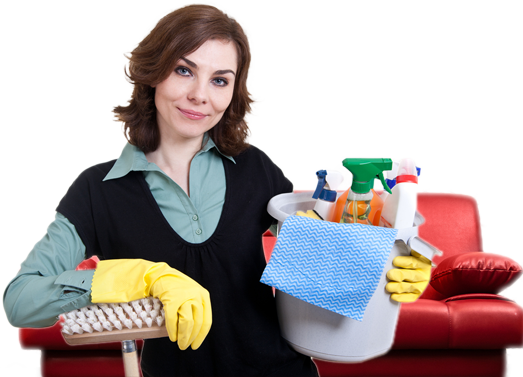Proven Methods to Keep Mold Out of Your Bathroom
Posted on 14/08/2025
Proven Methods to Keep Mold Out of Your Bathroom
Bathrooms are the perfect environment for mold to thrive--warm, damp, and often poorly ventilated. Mold not only looks unsightly but can also cause health issues and permanent damage to your home. That's why it's crucial to be proactive in keeping your bathroom mold-free. In this comprehensive article, we'll explore proven methods to keep mold out of your bathroom, equipping you with every tip and trick required for long-term prevention and a healthier home environment.

Understanding Why Mold Grows in Your Bathroom
Before tackling how to prevent bathroom mold, it's important to know why it appears. Mold growth is most common in areas with:
- High humidity levels
- Poor air circulation
- Inadequate cleaning practices
- Frequent water spills and leaks
- Lack of natural light
Microscopic mold spores float in the air and settle wherever they find moisture and organic materials (like soap residue, dust, or even drywall).
Recognizing the Signs of Mold in the Bathroom
Preventing mold starts with being able to spot it early. Here are some signs of mold growth in bathrooms:
- Black, green, or pink spots on grout, tiles, or ceilings
- Musty, earthy odors
- Peeling paint or wallpaper
- Persistent condensation or water stains
Top Methods to Keep Bathroom Mold at Bay
1. Proper Bathroom Ventilation
Improving bathroom ventilation is the first line of defense in preventing mold growth. Effective ventilation helps to remove excess humidity after a hot shower or bath, making the environment less inviting for mold spores.
- Install an exhaust fan: Ensure that your bathroom has a powerful exhaust fan venting to the outside--not just the attic.
- Run the fan: Use the fan during and for at least 30 minutes after showers or baths to reduce humidity.
- Open windows: Whenever weather permits, crack open a window to let steam escape and bring in fresh air.
- Leave the door ajar: Allow additional airflow by leaving the door open slightly.
2. Control Humidity Levels
Keeping bathroom humidity below 50% is crucial for mold prevention. Here are some strategies:
- Use a dehumidifier: In persistently damp bathrooms, a small dehumidifier can work wonders.
- Monitor humidity: Invest in a hydrometer to keep an eye on moisture levels.
- Dry damp surfaces: Always wipe down the shower walls, tub, and other wet areas after use.
3. Regular and Thorough Cleaning
Routine cleaning is a highly effective way to keep bathroom mold away. Mold feeds on organic build-up like soap scum and body oils. These cleaning practices should be a part of your weekly routine:
- Scrub grout and tiles: Use an anti-mold bathroom cleaner or a vinegar solution (equal parts white vinegar and water).
- Disinfect drains: Pour boiling water followed by vinegar and baking soda monthly to prevent mold in drains.
- Wash or replace shower curtains: Use machine-washable curtains or liners, and wash them regularly.
- Declutter: Limit bath products on shelves and ledges as clutter traps moisture.
4. Fix Leaks Promptly
Leaky fixtures and pipes are the fastest routes to a moldy bathroom. To keep mold out of your bathroom, inspect your bathroom regularly for leaks, including under the sink, around the toilet base, and in the shower. Fix them immediately, and dry out water-damaged areas as soon as possible.
5. Improve Lighting and Use Mold-Resistant Materials
Mold dislikes direct sunlight and well-lit spaces. If your bathroom is naturally dark, install bright, energy-efficient LED lights. When renovating or making improvements:
- Opt for mold-resistant paint: Special bathroom paints contain fungicides to inhibit mold.
- Choose non-porous materials: For walls and floors, use ceramic tiles, glass, or other water-resistant surfaces.
- Seal grout lines: Apply a grout sealer annually to reduce moisture absorption.
6. Ensure Proper Drainage
Poor drainage in showers, tubs, and sinks can cause standing water and breed mold. Make sure all bathroom surfaces are angled to drain water effectively. Clean hair and debris from drains regularly so water flows freely.
7. Use Natural Mold Deterrents
Several household products are effective at deterring mold growth:
- White vinegar: Spray undiluted vinegar onto tiles and grout as a natural mold killer. Let it sit for an hour before rinsing.
- Baking soda: Make a paste with water, apply to grout or damp areas, and scrub with a brush.
- Tea tree oil: Add a teaspoon to a spray bottle of water, shake well, and spray on problem spots. Tea tree oil is a potent natural fungicide.
Regular application of these natural cleaners can keep mold spores at bay without harsh chemicals.
Advanced Tips for Mold Prevention
Maintain Towels And Bathroom Fabrics
Mold can grow easily on wet towels and mats. To ensure these don't become a hidden source of mold:
- Hang towels to dry immediately after use. Avoid leaving them bunched up on the floor or hooks.
- Wash bath mats frequently. Opt for mats that dry quickly and are machine-washable.
- Replace old textiles. If towels or mats show persistent mildew smells, replace them to minimize risk.
Maintain and Inspect Caulking and Seals
Damaged caulk and failing seals around tubs, sinks, or toilets trap moisture and allow mold to flourish. Inspect caulking twice a year and replace any deteriorated areas promptly with mold-resistant caulk.
Watch for Hidden Mold Hotspots
Mold sometimes forms behind wallpaper, under cabinets, or inside walls where moisture gets trapped. Signs may include a persistent musty odor or chronic moisture in one area. If you suspect hidden mold, consider professional inspection and remediation.
Preventing Mold During Bathroom Renovations
Renovating your bathroom is the perfect opportunity to build in lasting mold control measures.
- Install vapor barriers: Use waterproof membranes behind tiles in shower or bath areas.
- Upgrade ventilation: Fit a higher-capacity exhaust fan with a timer or humidity sensor.
- Stick to water-resistant materials: Elevate fixtures off the ground and use materials designed for wet environments.
- Seal all joints: Use silicone sealant on all gaps and seams to prevent leaks.
What To Do If You Discover Mold
Even the most diligent homeowners can sometimes discover bathroom mold. Here's what to do if you spot it:
- Identify and eliminate the moisture source (fix leaks, improve airflow).
- Clean small areas (under 10 sq. ft.) with vinegar or a commercial mold remover. Always wear gloves and open a window for ventilation.
- For larger infestations or black mold, consult a professional remediation service for safe and effective removal.
Prompt action stops mold from spreading and causing more damage.

Key Takeaways: Keeping Mold Out of Your Bathroom
- Ventilate: Use exhaust fans, open windows, and keep air circulating.
- Keep it dry: Wipe down surfaces, dry towels, and fix leaks quickly.
- Clean regularly: Pay special attention to grout, drains, and hard-to-reach corners.
- Use the right materials: Seal grout, use mold-resistant paints, and avoid porous fixtures.
- Act swiftly: If you spot mold, address it immediately to prevent spread.
Mold prevention in the bathroom is an ongoing process, but with these proven tips to avoid mold buildup, you can ensure a fresher, healthier home. By controlling moisture, improving ventilation, and cleaning regularly, you minimize the risk of mold taking root in your bathroom.
Frequently Asked Questions
- How do I get rid of persistent mold in bathroom grout?
Use a paste of baking soda and water or a commercial grout cleaner. Scrub with a firm brush, rinse, and re-seal the grout. If mold returns, check for hidden moisture sources. - Can I use bleach to kill bathroom mold?
Bleach can remove visible mold on non-porous surfaces, but it doesn't penetrate porous materials or prevent future growth. Vinegar and tea tree oil are better long-term solutions for bathroom mold control. - Will air purifiers help prevent mold in the bathroom?
Air purifiers can reduce airborne spores but aren't substitutes for proper ventilation and moisture control. - Is bathroom mold dangerous?
Exposure to certain types of bathroom molds can exacerbate allergies, asthma, and other health problems, especially for sensitive individuals.
Conclusion: A Mold-Free Bathroom is an Achievable Goal
With the right cleaning habits, maintenance, and preventative steps, you can keep mold out of your bathroom for good. A combination of effective ventilation, swift leak repair, regular cleaning, and strategic remodeling choices will ensure the safety and beauty of your personal space.
Apply these proven methods for bathroom mold prevention and enjoy a fresher, healthier bathroom every day. Remember, consistency is key--stay vigilant and keep moisture under control for the ultimate defense against mold!



